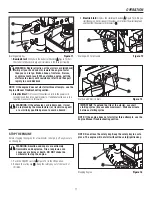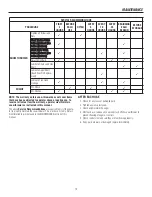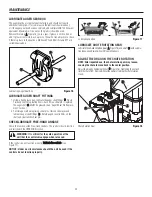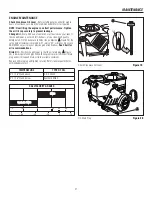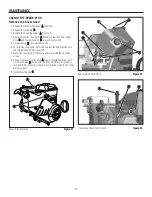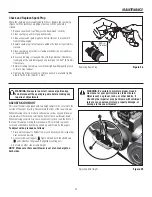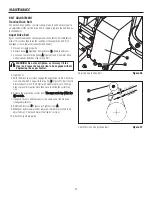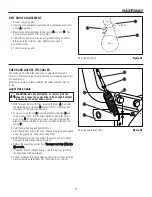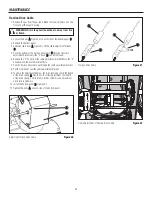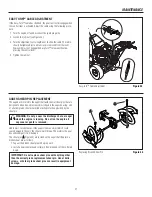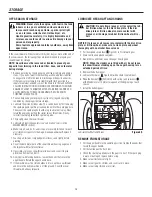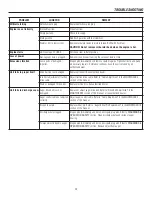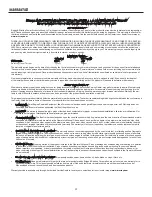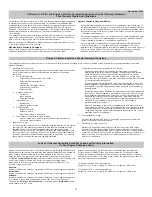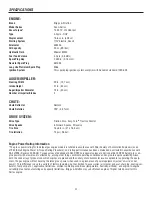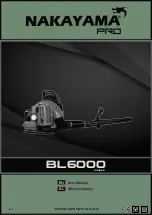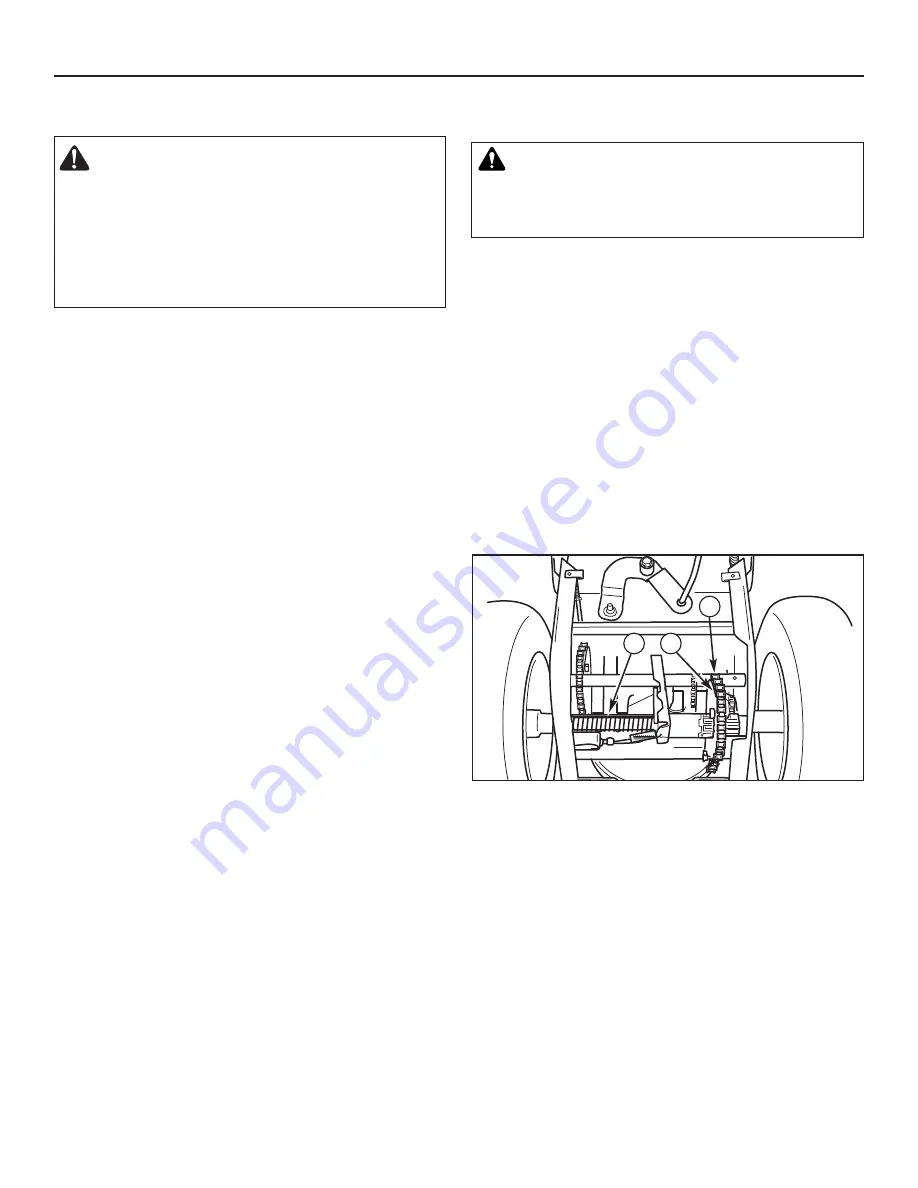
28
OFF SEASON STORAGE
WARNING: Never store the engine, with fuel in the tank,
indoors or in a poor ventilated enclosure where fuel
fumes could reach an open flame, spark or pilot light
as on a furnace, water heater, clothes dryer, etc.
Handle gasoline carefully. It is highly flammable and
careless use could result in serious fire damage to your
person and/or property.
Drain fuel into approved containers outdoors, away from
open flame.
If the snow thrower will be stored for thirty (30) days or more at the end of
the snow season, the following steps are recommended to prepare your
snowthrower for storage.
NOTE: Gasoline must be removed or treated to prevent gum
deposits from forming in the tank, filter, hose, and carburetor
during storage.
1. Remove gasoline, by running engine until tank is empty and engine
stops. If you do not want to remove the gasoline, add fuel stabilizer
to any gasoline left in the tank to minimize gum deposits and acids.
If the tank is almost empty, mix stabilizer with fresh gasoline in a
separate container and add some of the mixture to the tank. ALWAYS
FOLLOW INSTRUCTIONS ON STABILIZER CONTAINER. THEN RUN
ENGINE AT LEAST 10 MINUTES AFTER STABILIZER IS ADDED TO
ALLOW MIXTURE TO REACH CARBURETOR. STORE SNOW
THROWER IN SAFE PLACE.
2. You can help keep your engine (4-cycles only) in good operating
condition by changing oil before storage.
3. Lubricate the piston/cylinder area. This can be done by first removing
the spark plug and squirting clean engine oil into the spark plug hole.
Then cover the spark plug hole with a rag to absorb oil spray. Next,
rotate the engine by pulling the starter two or three times. Finally,
reinstall spark plug and attach spark plug wire.
4. Thoroughly clean the snow thrower.
5. Lubricate all lubrication points (see “Lubrication” topics in the
MAINTENANCE section).
6. Make sure all nuts, bolts, and screws are securely fastened. Inspect
all visible moving parts for damage, breakage, and wear. Replace if
necessary.
7. Touch up all rusted or chipped paint surfaces; sand lightly before
painting.
8. Cover the bare metal parts of the snow thrower housing auger, and
the impeller with rust preventative.
9. If possible, store your snow thrower indoors and cover it to give
protection from dust and dirt.
10. On models with folding handles, loosen the knobs that secure the
upper handle. Rotate the upper handle back.
11. If the machine must be stored outdoors, block up the snow thrower
and ensure the entire machine is off the ground. Cover the snow
thrower with a heavy tarpaulin.
REMOVE FROM STORAGE
1. Put the upper handle in the operating position, tighten the knobs that
secure the upper handle.
2. Fill the fuel tank with a fresh fuel.
3. Check the spark plug. Make sure the gap is correct. If the spark plug
is worn or damaged, replace before using.
4. Make sure all fasteners are tight.
5. Make sure all guards, shields, and covers are in place.
6. Make sure all adjustments are correct.
LUBRICATE HEX SHAFT AND CHAINS
CAUTION: Do not allow grease or oil to contact the rub-
ber friction wheel or the disc drive plate. If the disc
drive plate or friction wheel come in contact with
grease or oil damage to rubber friction wheel will re-
sult.
Lubricate Hex Shaft and Chains
Figure 35
NOTICE: If grease or oil comes into contact with the disc drive
plate or friction wheel, make sure to clean plate and wheel
thoroughly with an alcohol base solvent.
1. Position speed select lever (EE, Figure 5) in first forward gear.
2. Drain fuel to an approved container.
3. Stand the snow thrower up on the auger housing end.
NOTE: When the crankcase is filled with oil, do not leave
the snow thrower standing up on the auger housing for an
extended period of time.
4. Remove the bottom panel.
5. Lubricate the chains (A
A, Figure 35) with a chain type lubricant.
6. Wipe the hex shaft (B
B) (behind rod with spring) and sprockets (C
C)
with 5W30 motor oil, before storage and at the beginning of each
season.
7. Install the bottom panel.
A
B
C
STORAGE




